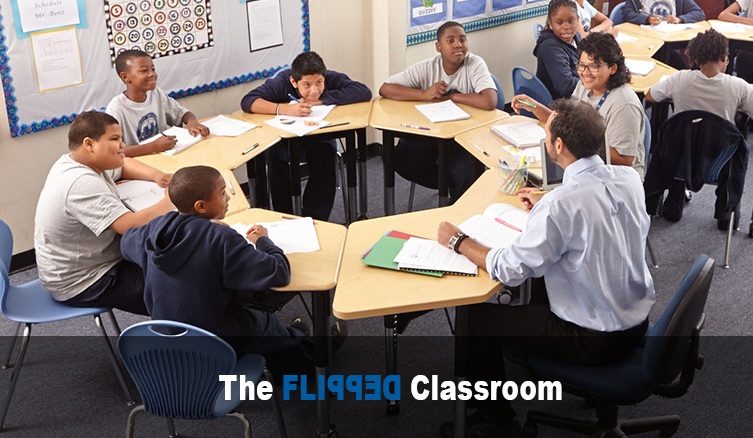Why Educators are Flipping Over the Flipped Classroom
By Academia Furniture
Posted July 6, 2017 in Tomorrow's Classroom
Consider please this scenario:
- Walk into classroom
- Sit at assigned desk
- Face front
- Listen to teacher lecture
- Do assigned classroom work
- Go home
- Do homework
Multiply by 6 school subjects daily, 5 days a week, 40+ weeks a year…
Does this sound familiar to you? It should. It is what all of us brought up in the last century experienced for most of our school careers. Looking at it now, we can be honest and admit that, with a few exceptions, it really was as boring, tedious and uninspiring as it reads. Thankfully, the educational tides have turned and the options of learning models and classroom design have greatly increased.
It seems like every day we hear about a new concept in education that is gathering popularity. Some of these models fizzle out (remember open concept schools?) but some of them, the ones that successfully address specific problems in our education systems, righteously just beg to be adopted by teachers, administrators and school boards alike. One of these models is the Flipped Classroom.
What is the Flipped Classroom?
Very simply put, a flipped classroom is one where students are introduced to content at home via short video lectures or presentations by their teacher, and return to class to review the content, work it through with their fellow students, participate in discussions or create projects.
The flipped classroom is a unique blended learning approach. It offers all the advantages of face-to-face interaction between students and teachers and students and their fellows, while also incorporating independent study through technology and online platforms. By incorporating, rather than shunning, in-class technology and, say, social media, students in flipped classrooms are more easily engaged by being able to tread through a familiar landscape at their own pace, in the comfort of their own homes, during the hours they would most likely be on their electronic devices anyway.
The flipped classroom model is particularly suitable for accommodating students at different levels of learning. By watching their teacher present the material via video, students are able to pause the lecture as needed, to rewind for further review or to fast-forward through material that is already familiar. Once back in the classroom they are able to interact with the teacher in a more meaningful and productive way by having already formulated questions or observations regarding the material.
And here is the great part, students can interact with the lecture not just by pausing, rewinding or fast forwarding but by googling terms or concepts they need clarification on, or wish to investigate further. Students can also live chat with their classmates and go through the material together.
Another great advantage of the flipped classroom model is that having the students view the material in advance frees up a large portion of class time, which allows the teacher to really engage with each individual student and cater specifically to their needs; more explanation to the student who did not grasp the material, supplemental material for the student who breezed through it.
The flipped classroom also allows the teacher to hone and perfect their lecture style and content, allowing them also to emphasize important points and to add any elements like animation or power point in order to engage the students. These presentation can then be archived on line so students can go back to them anytime for clarification or review. Furthermore, without the typical class time interruptions such as disciplining rowdy children, excusing students from class or pesky fire drills, a teacher can condense the material into a shorter and finite amount of time thus making the lecture more easily digestible.
The Flipped Classroom
The space that accommodates the flipped classroom model is one that is also suited to collaborative learning. It ideally should include modular desks, preferably on casters, that can be easily reconfigured, a cluster of couches or easy chairs, plenty of whiteboards on the walls computer monitors throughout, and of course, as much free space as possible to facilitate mobility.
Versatility should be the main concern when designing the space. Picture a classroom where in one corner three students work on a project together. In the other corner, the teacher works individually with the student who needs some extra help. At the whiteboards, students work through comprehension questions or equations, or just engage in some free from doodling while contemplating the material. And over on the couches, yet another group of students engage in a lively discussion and exchange of ideas.
